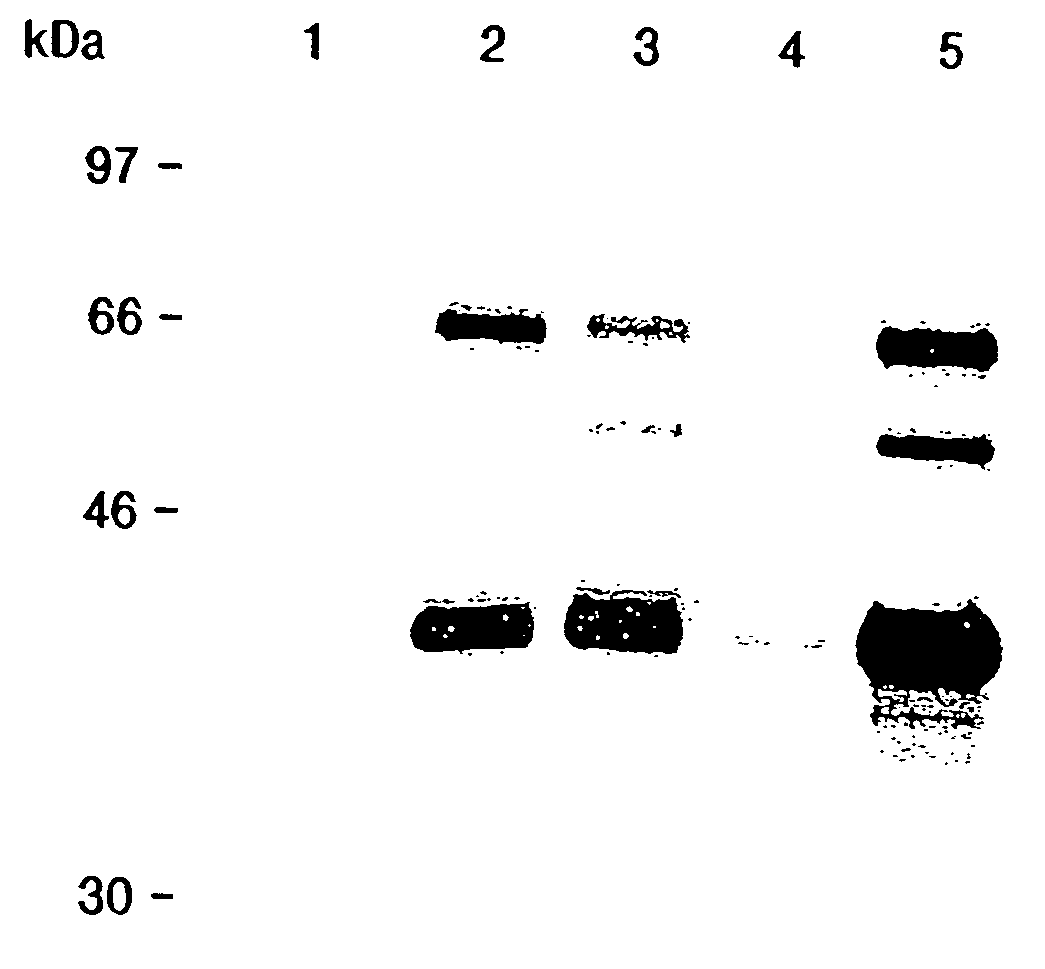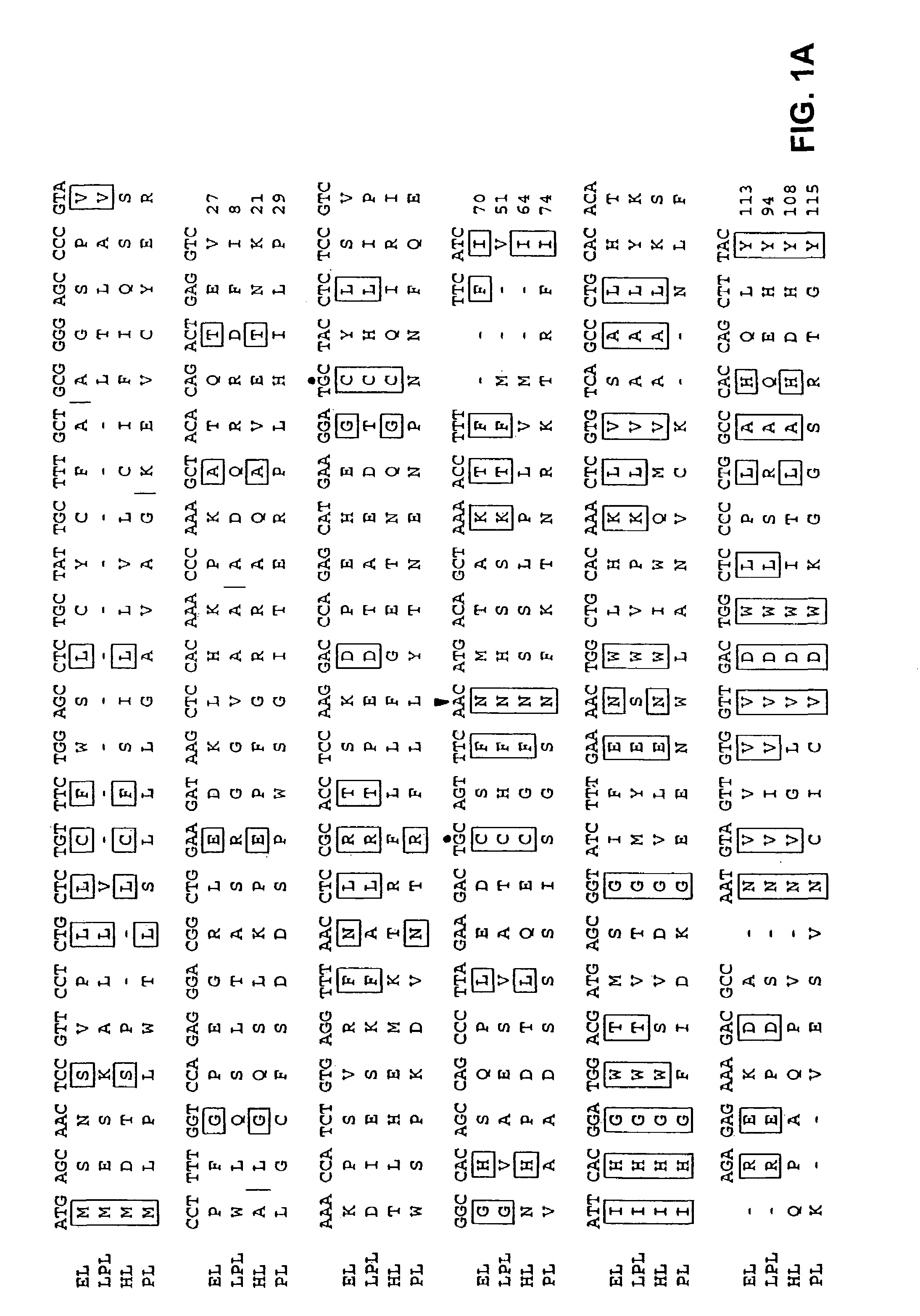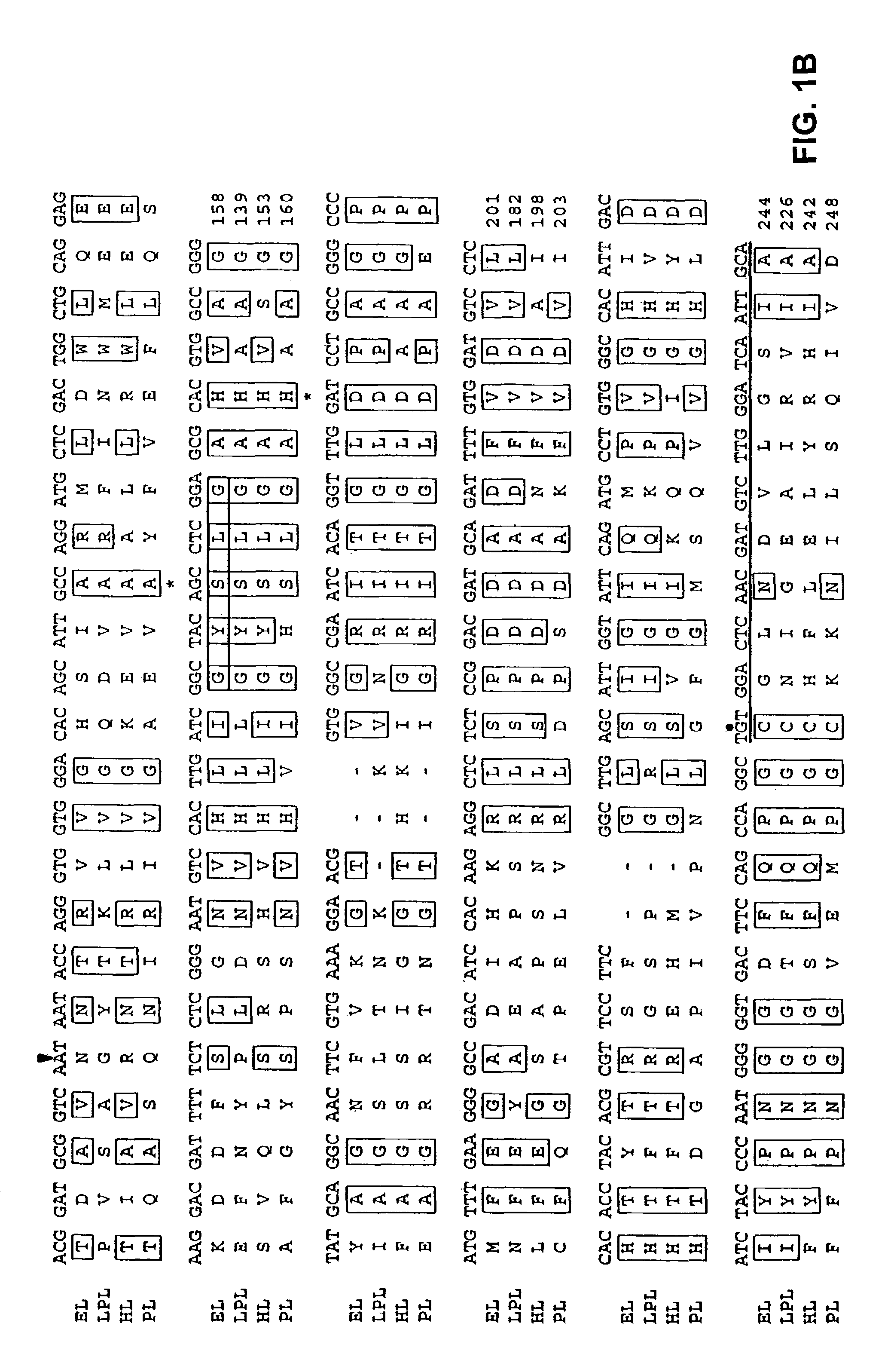Compositions and methods for effecting the levels of high density lipoprotein (HDL) cholesterol and apolipoprotein AI very low density lipoprotein (VLDL) cholesterol and low density lipoprotein (LDL) cholesterol
a technology of high density lipoprotein and very low density lipoprotein, which is applied in the field of compositions and methods for reducing the levels of ldl cholesterol in all persons, and can solve the problems of increased risk of cardiovascular disease, and increased risk of atherosclerosis
- Summary
- Abstract
- Description
- Claims
- Application Information
AI Technical Summary
Benefits of technology
Problems solved by technology
Method used
Image
Examples
example 1
Identification of a Differentially Expressed cDNA
[0243]RNA Preparation
[0244]Human monocytic THP-1 cells (Smith, P. K., Krohn, R. I., Hermanson, G. T., Mallia, A. K., Gartner, F. H. Provenzano, M. D., Fujimoto, E. K., Goeke, N. M., Olson, B. J., and Klenk, D. C. (1985) Anal. Biochem. 150, 76–85) were cultured in RPMI-1640 medium (GIBCO) with 25 mM HEPES, 10% fetal bovine serum, 100 units / ml penicillin G sodium and 100 units / ml streptomycin sulfate. Cells were plated onto 15 cm tissue culture dishes at 1.5×107 cells / plate, and treated with 40 ng / ml phorbol 12-myristate 13-acetate (Sigma) for 48 hours to induce differentiation of the cells. Human low density lipoproteins (LDL) were purchased from Calbiochem, and were dialyzed exhaustively versus PBS at 4° C. The LDL was then diluted to 500 μg / ml and dialyzed versus 5 μM CuSO4 in PBS at 37° C. for 16 hours. To stop oxidation, the LDL was dialyzed exhaustively versus 150 mM NaCl, 0.3 mM EDTA, then filter sterilized. Protein concentration...
example 2
Cloning and Chromosomal Localization of the LIPG Gene
[0251]cDNA Library Screening
[0252]A human placental cDNA library (Oligo dT and random primed, Cat #5014b, Lot #52033) was obtained from Clontech (Palo Alto, Calif.). A radiolabeled probe was created by excising the insert of a plasmid containing the 5′RACE reaction PCR product described above. The probe was radiolabeled using the random priming technique: the DNA fragment (50–100 ng) was incubated with 1 μg of random hexamers (Gibco) at 95° C. for 10 minutes followed by 1 minute on ice. At room temperature the following were added: 3 μl 10× Klenow buffer (100 mM Tris-HCl pH 7.5, 50 mM MgCL2, 57 mM dithiothreitol; New England Biolabs), 3 μl 0.5 mM dATP, dGTP, dTTP), 100 μCi α-32PdCTP (3000 Ci / mmol, New England Nuclear), and 1 μl Klenow fragment of DNA polymerase I (5 units, Gibco). The reaction was incubated for 2–3 hours at room temperature and the reaction was then stopped by increasing the volume to 100 μl with TE pH 8.0 and add...
example 3
LIPG RNA Analysis
[0258]Expression of LIPG RNA in THP-1 Cells
[0259]A commercially prepared filter containing 3 μg each of mRNAs from human tissues (heart, brain, placenta, lung, liver, skeletal muscle, kidney, and pancreas) was obtained from Clontech (Catalog #7760-1). This filter was probed and processed as described above. After probing with the radiolabeled LLG fragment and autoradiography, the probe was stripped by washing in boiling 0.1×SSC, 0.1% SDS for 2×15 min. in a 65° C. incubator. The membranes were then probed with a 1.4 kilobase pair DNA fragment encoding human lipoprotein lipase. This fragment was obtained by RT-PCR of the THP-1 RNA (PMA and oxLDL treated) using the 5′LPL and 3′LPL primers depicted in SEQ ID NOS. 20 and 21, respectively, and the RT-PCR conditions described above. After autoradiography, the membranes were stripped again and reprobed with a radiolabeled fragment of the human beta actin cDNA to normalize for RNA content. The results of these analyses are s...
PUM
| Property | Measurement | Unit |
|---|---|---|
| Composition | aaaaa | aaaaa |
| Density | aaaaa | aaaaa |
Abstract
Description
Claims
Application Information
 Login to View More
Login to View More - R&D
- Intellectual Property
- Life Sciences
- Materials
- Tech Scout
- Unparalleled Data Quality
- Higher Quality Content
- 60% Fewer Hallucinations
Browse by: Latest US Patents, China's latest patents, Technical Efficacy Thesaurus, Application Domain, Technology Topic, Popular Technical Reports.
© 2025 PatSnap. All rights reserved.Legal|Privacy policy|Modern Slavery Act Transparency Statement|Sitemap|About US| Contact US: help@patsnap.com



